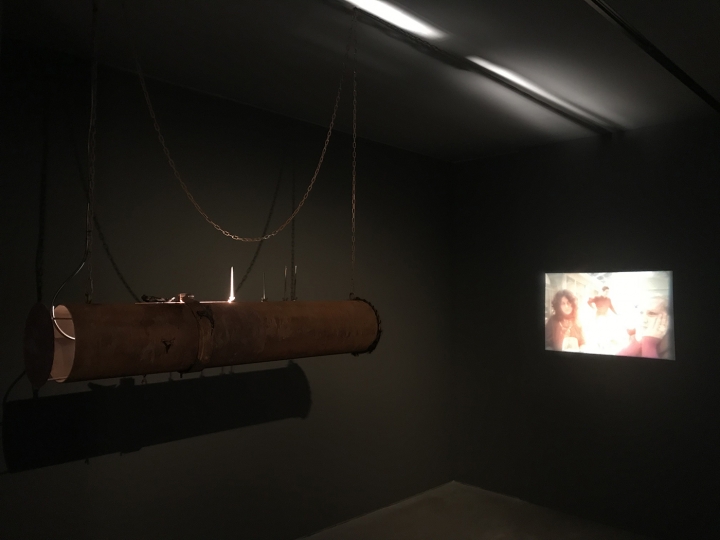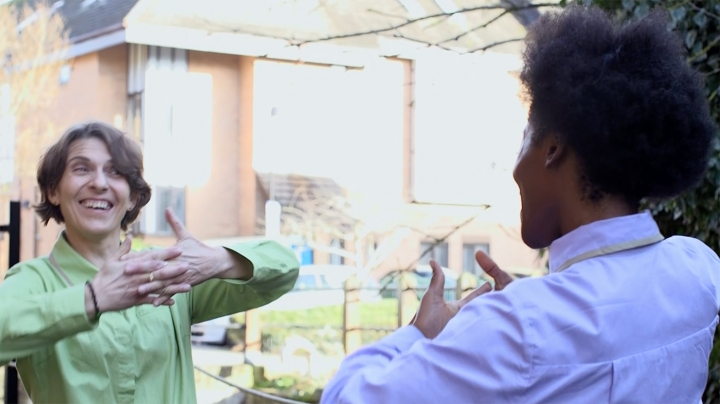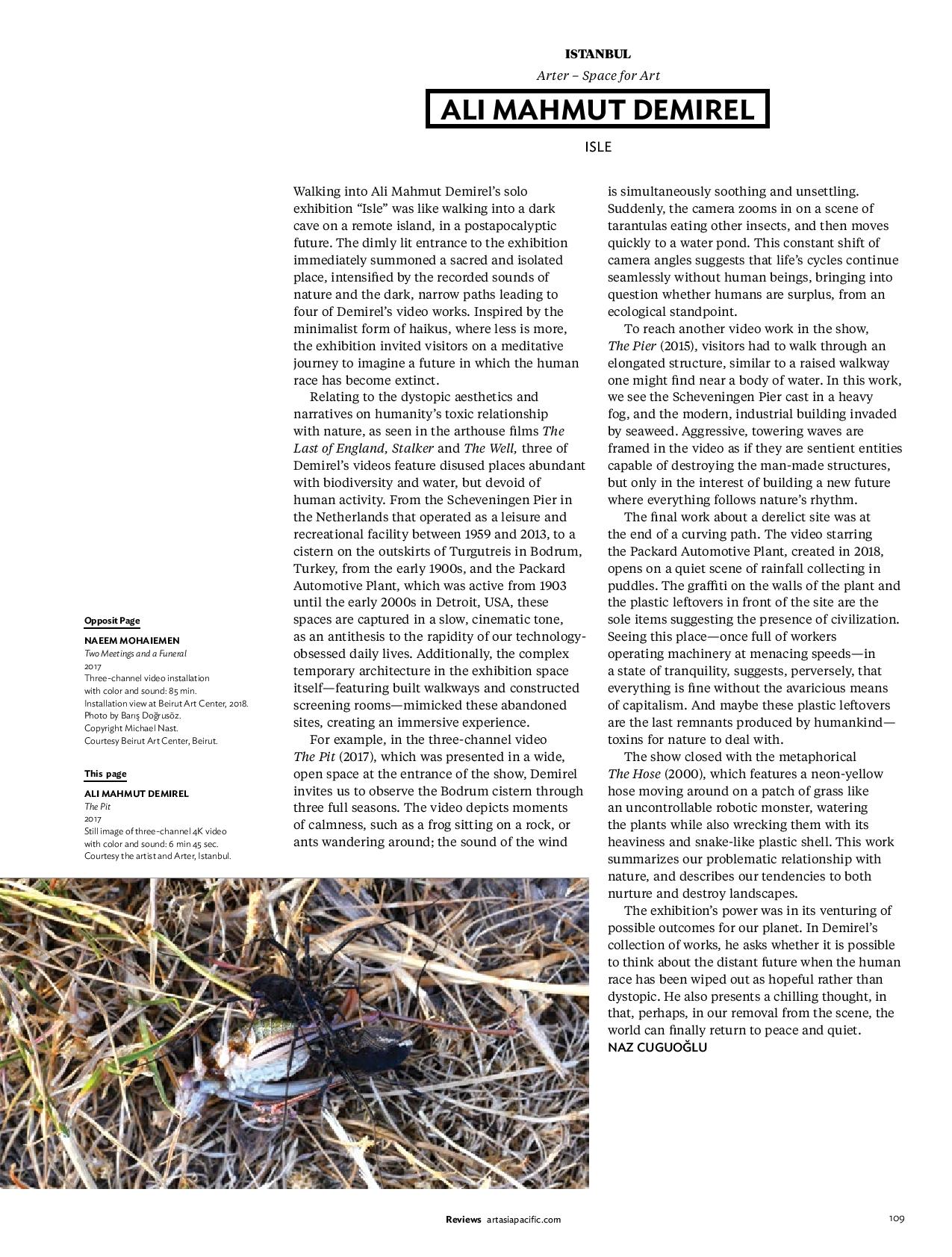*** This article is commissioned by Joan Mitchell Foundation, to read it on the foundation's website: https://www.joanmitchellfoundation.org/journal/how-to-build-and-maintain-a-relationship-with-a-curator-over-time
Naz Cuguoğlu is an Istanbul-based curator and art writer who consults with Joan Mitchell Foundation grant recipients as part of our ongoing Professional Development series. We asked Naz to share her take on how artists can build and maintain relationships with curators.
The relationship between the artist and the curator is like a long-distance love affair, sometimes marked with geographic separation and lack of face-to-face contact. As it is extra difficult to maintain these kinds of relationships, it requires even more love, care, and patience from both sides. While there is not one perfect, magical solution that anyone can offer to make this relationship work, there are multiple strategies that you can make use of to make it as healthy and sustainable as possible.
It takes two to tango.
The first step to building and maintaining an artist/curator relationship is accepting the fact that we both need each other, and that this is a mutually beneficial engagement. And when I say this, I do not mean that curators need artists to exhibit their works in their shows, and artists need curators to select, display, arrange, and preserve their artworks. I have no interest in repeating the long-existing discussion on who a curator really is, and whether we need them. I am more interested in highlighting the potential that this relationship between the artist and the curator has to offer at a time when we are going through intense political crises all around the world. I believe that it is even more urgent that we understand the importance of collaboration, in-depth dialogue, community, and exchanging ideas not only among society, but also between artists and curators. I believe that relationships between these two parties with different skills and approaches have a lot to offer for a better and hopeful future, through creating encounters between individuals with different perspectives, and eventually leading to a less polarized society.
Finding THE ONE(S).
There is no monogamy when it comes to the relationships between artists and curators—it is more about pursuing multiple relationships simultaneously, so we can only talk about finding THE ONEs. And, there is no online dating application for finding the right curators that would be the perfect fit for your artistic practice, and with whom you’d live happily ever after—at least not yet. For this reason, it is important that you create platforms for yourself to increase the chance to meet individuals with similar research and artistic interests. One way is very well-known, but sometimes underrated: being present at the openings and events where you can grow your network of curators. It is also always helpful to follow digital and published art magazines to be up-to-date and tuned into finding THE ONEs. In this way, rather than sending copy-paste e-mails with your portfolio, you can keep your e-mails as personal as possible, tailored to the individuals to whom you are reaching out, and it mostly works—if it does not, it is also important to acknowledge that it’s actually okay, and that it’d be pretty ambitious to expect this spark to take place for every encounter. I think intimacy, flexibility, and openness are the keys in finding THE ONEs, and you never know where this relationship might lead both of you. It might be interesting to stop thinking about the ultimate outcome of this relationship, which is regarded as “the exhibition” mostly, but also considering “the process,” which is itself full of potential for inspiration and change-making.
“You used to call me on my cell phone” Syndrome.
Once you have found THE ONEs, it is still important to keep in mind that, as with any relationship, the one between the artist and the curator requires time and effort. As we are living in the age of excessive information, it sometimes becomes difficult to keep each other updated, leaving the relationships to deteriorate through time. To prevent this, it is of course valuable to keep your website and social media accounts updated, and to send newsletters with news about your upcoming exhibitions and projects, ideally no more than once a month—too many newsletters can also be unpleasant. But what is more important is being aware that to build and maintain a relationship with a curator overtime might again mean more than that, if we can all try to keep things personal and intimate, leading to a more enriched dialogue and collaboration in the long run. To make this relationship sustainable, it is always worth taking the time to send private e-mails, inviting them to your studio, or to an ongoing exhibition, where you can engage in a more in-depth conversation about your practice.
We are all in this together.
You might be asking yourself: Why all this effort? The truth is, we are all in this together. I believe the future is collaboration, learning from each other, growing and healing together. Do we want to change certain things about the ongoing politics, or do we accept things as they are? If you are also an advocate of the former, I suggest focusing on the process, the intimate dialogue, the micro effect on an individual level, rather than the outcome, or the big art events where no one has the possibility to touch upon each other’s lives. It might be the right time to imagine an art world in which there is no hierarchy also between the artists and the curators, forming relationships in which we can formulate intimate dialogues, and experiment together, so that we can even sometimes make mistakes for the sake of our progress. There is a lot we can learn from each other if we can keep ourselves open, and invest in our relationships as lovers do.

















